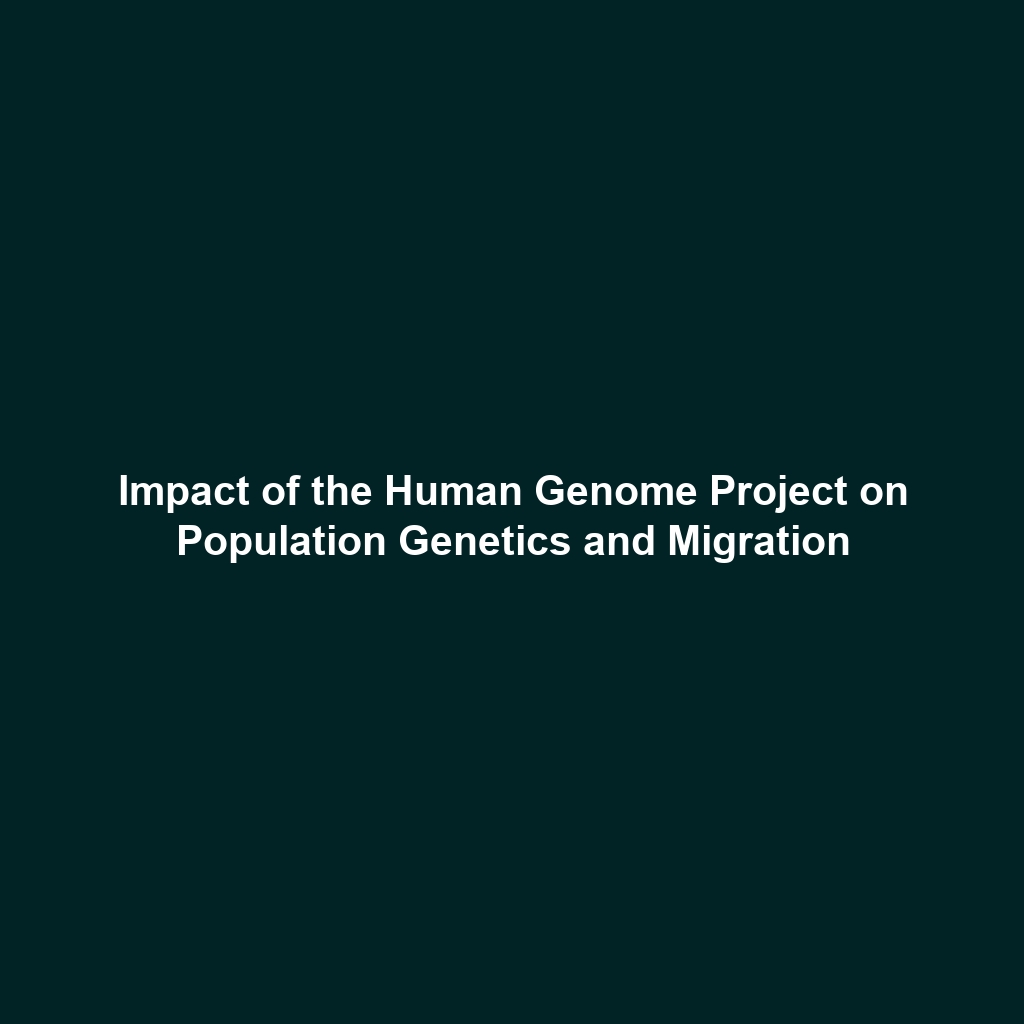Advancements in Personalized Medicine: Building on the Human Genome Project Findings
Category: Human Genome Project
Topic: Launched to build on HGP findings and develop personalized approaches to medical treatment based on genetic, environmental, and lifestyle factors.
Introduction
The launch of initiatives to enhance the Human Genome Project (HGP) findings marks a transformative shift toward personalized medicine. By integrating genetic, environmental, and lifestyle factors, scientists aim to develop tailored medical treatments that resonate with the unique genetic profiles of individuals. This approach not only underscores the significance of the HGP in subsequent research but also promotes a more holistic view of health and disease management. By analyzing these interconnected elements, the potential for improved patient outcomes and more effective treatments is maximized.
Key Concepts
Understanding Personalized Medicine
Personalized medicine leverages insights gained from the HGP to craft individualized treatment plans based on:
- Genetic Factors: Variations in DNA impacting health.
- Environmental Influences: External conditions affecting genetic expression.
- Lifestyle Choices: Behaviors that contribute to health outcomes.
This multifaceted approach aligns with the original goals of the Human Genome Project, which aimed to decode the human genome and enhance our understanding of genetic contributions to disease.
Applications and Real-World Uses
Real-world applications of personalized medicine thriving on HGP findings include:
- Targeted Therapies: Cancer treatments that are designed based on the genetic mutations present in tumors.
- Pharmacogenomics: Tailoring drug prescriptions to individual genetic profiles to minimize side effects and enhance efficacy.
- Preventive Medicine: Using genetic testing to identify predispositions to certain conditions and promote early interventions.
These applications highlight how personalized approaches to medical treatment significantly improve healthcare delivery and outcomes, firmly rooted in the discoveries of the Human Genome Project.
Current Challenges
Challenges in Implementing Personalized Medicine
Despite its potential, several challenges arise in the exploration and application of personalized medicine:
- Data Privacy: Concerns about the security of genetic information.
- High Costs: Advanced testing and treatment protocols can be expensive, limiting access.
- Lack of Standardization: Variability in how treatments are applied based on genetic information.
Addressing these issues is critical for the progress of personalized medicine in relation to the Human Genome Project findings.
Future Research and Innovations
Looking forward, the realm of personalized medicine continues to evolve with groundbreaking research and innovations. Some anticipated breakthroughs include:
- CRISPR Technology: Applications in gene editing to rectify genetic abnormalities.
- AI-Driven Analytics: Utilizing Artificial Intelligence to analyze genetic data for better treatment outcomes.
- Wearable Genomic Devices: Future devices that could monitor real-time genetic responses to various stimuli.
These innovations promise to significantly shape the objectives and outcomes of projects stemming from the Human Genome Project.
Conclusion
In summary, the integration of personalized approaches to medical treatment based on the findings from the Human Genome Project not only enhances the quality of care but also addresses the complexities of individual health. The continuous evolution of research, despite existing challenges, signifies a future where tailored treatment strategies become the norm. To further delve into related topics, you may explore our articles on genomic medicine and advancements in genetics.


